Enhance Your Home: Expert Interior Lighting Design Solutions
Importance of interior lighting design in enhancing your home
When it comes to creating a warm and inviting atmosphere in your home, interior lighting design plays a crucial role. Lighting has the power to transform any room and lift the functionality to new heights. Whether you are revamping your living room, kitchen, or bedroom, strategic lighting choices can make a world of difference.
The significance of lighting design goes beyond simply illuminating a room; it sets the mood, enhances architectural features, and highlights key design elements. Thoughtfully designed lighting can make a small space appear larger, draw attention to artwork or focal points, and create a comfortable ambience.
Imagine walking into a room that is bathed in soft, warm light, casting a gentle glow on all the right areas. The room suddenly feels inviting, welcoming you to sit back and relax. On the other hand, harsh, bright lighting can create an unwelcoming and sterile environment, making it difficult to unwind after a long day.
Understanding the art of lighting design is essential to achieve the desired atmosphere in your home. By employing various lighting techniques and fixtures, you can transform any room into a haven of tranquillity or an energizing space for productivity.
In the following sections, we will explore the different types of lighting, delve into the intricacies of designing with lighting, discuss suitable fixtures and accessories, and even touch upon the benefits of hiring a professional lighting designer.
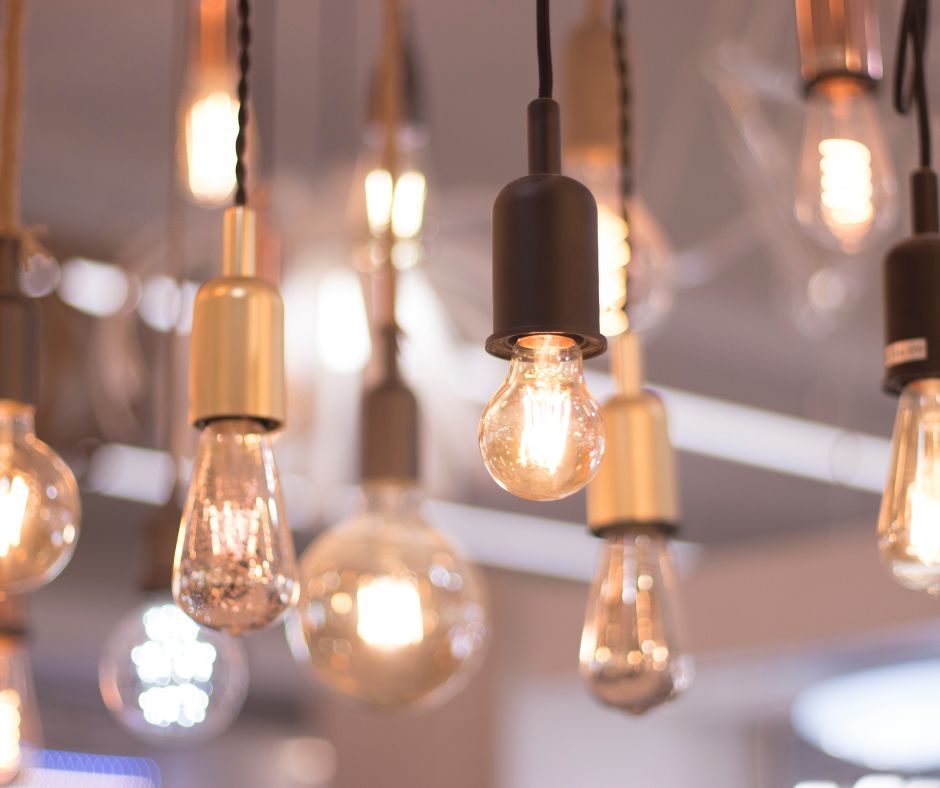
Understanding Interior Lighting Design
Lighting is not just about illuminating a space; it can transform the atmosphere and enhance the overall aesthetic appeal of your home. By understanding the different types of lighting, recognising the importance of lighting in home design, and considering various factors in lighting design, you can create a truly captivating and inviting living environment.
Different Types of Lighting
In interior lighting design, there are three main types of lighting: ambient lighting, task lighting, and accent lighting. Each type serves a specific purpose and contributes to the overall functionality and ambiance of a room.
- Ambient Lighting: This is the general, overall lighting that provides a comfortable level of illumination to an entire space. It sets the tone and creates a welcoming atmosphere in a room. Common examples of ambient lighting include ceiling-mounted fixtures, chandeliers, and wall sconces.
- Task Lighting: As the name suggests, task lighting is focused on providing adequate illumination for specific activities or tasks. It is essential in areas where you need to perform detailed work, such as reading, cooking, or working at a desk. Task lighting can be in the form of table lamps, under-cabinet lights, or adjustable track lighting.
- Accent Lighting: Accent lighting is used to highlight and draw attention to specific architectural features, artwork, or decorative elements in a room. It adds depth and visual interest to the overall design. Spotlights, wall washers, and picture lights are commonly used for accent lighting.
Importance of Lighting in Home Design
Lighting is a crucial aspect of home design that should never be overlooked. It has the power to transform a dull and uninspiring space into one that is vibrant and visually appealing. Properly designed lighting can:
- Enhance the Mood: The right lighting can create a warm and intimate atmosphere, making your home feel warm and inviting. On the other hand, brighter lighting can energize and uplift the mood in a room.
- Highlight Architectural Features: Well-placed lighting can bring attention to architectural details, such as exposed beams, vaulted ceilings, or intricate cornices, adding depth and character to your space.
- Improve Functionality: Adequate task lighting in areas like the kitchen or home office can improve your productivity and make everyday tasks easier to accomplish.
- Create Visual Interest: By strategically placing accent lighting, you can highlight artwork, sculptures, or other decorative pieces, making them the focal points of a room.
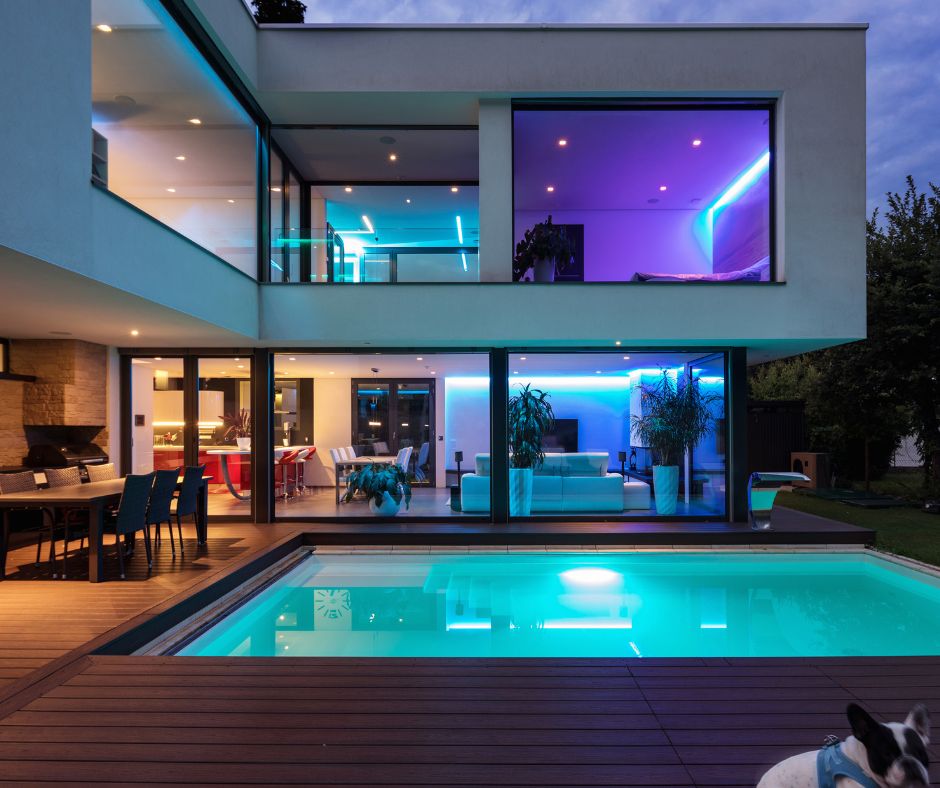
Factors to Consider in Lighting Design
When planning your lighting design, it is essential to consider various factors to ensure optimal functionality and visual appeal. These factors include:
- Natural Light: Take advantage of natural light sources and consider how they interact with artificial lighting. Balancing natural and artificial lighting can create a harmonious and well-lit space.
- Room Size and Layout: The size and layout of a room will dictate the type and placement of lighting fixtures. Larger rooms may require multiple light sources, while smaller rooms may benefit from a single fixture that provides both ambient and task lighting.
- Colour Temperature: The colour temperature of light can greatly influence the mood and ambiance of a room. Warm white tones (around 2700-3000K) create a cozy and inviting atmosphere, while cool white tones (around 5000-6000K) can make a space feel more energetic and vibrant.
- Energy Efficiency: Consider energy-efficient lighting options, such as LED bulbs, to reduce energy consumption and minimize your environmental impact. LED lighting solutions are not only eco-friendly but also have a longer lifespan, making them a cost-effective choice in the long run.
Understanding the different types of lighting, recognizing the importance of lighting in home design, and considering various factors in lighting design are essential steps in creating a well-lit and visually captivating living space. By carefully planning your interior lighting design, you can transform your home into a harmonious and inviting sanctuary.
For more inspiration and ideas on lighting design, check out our home lighting ideas and pendant lighting ideas articles. If you’re looking for outdoor lighting solutions or garden lighting ideas, we’ve got you covered too!
Types of Interior Lighting
When it comes to interior lighting, there are various types that can help create the perfect atmosphere in your home. Each type serves a specific purpose, from providing overall illumination to highlighting key features or tasks. In this section, we will explore the three main types of interior lighting: ambient lighting, task lighting, and accent lighting.
Ambient Lighting
Ambient lighting, also known as general lighting, is the foundation of any well-designed lighting plan. It provides overall illumination to a room, ensuring that it is well-lit and inviting. Ambient lighting creates a comfortable and welcoming atmosphere by evenly distributing light throughout the space.
To achieve ambient lighting, you can use a combination of natural light, such as windows or skylights, and artificial light sources like overhead fixtures or recessed lights. The goal is to create a soft, diffused light that fills the room without creating harsh shadows or glare.
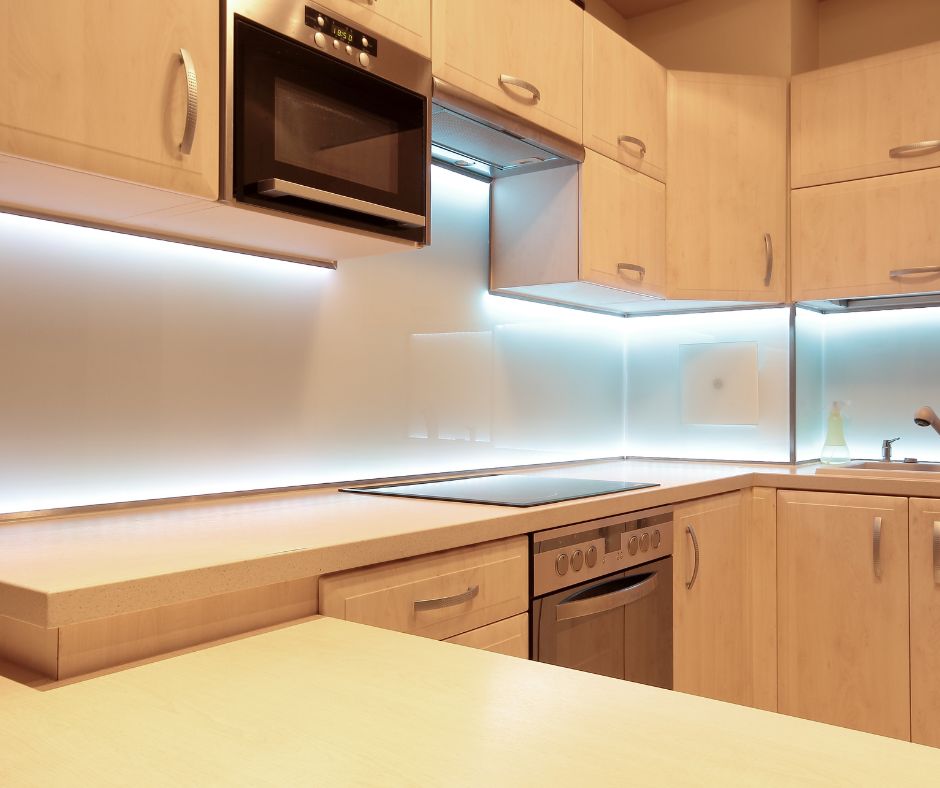
Task Lighting
Task lighting is specifically designed to illuminate areas where specific activities take place. It provides focused, directional light to help you perform tasks with ease and precision. Whether you’re reading a book, cooking in the kitchen, or working at your desk, task lighting ensures that you have ample light to see clearly and avoid eye strain.
Popular examples of task lighting include desk lamps, under-cabinet lights in the kitchen, and reading lights next to your favorite armchair. These fixtures are strategically placed to provide targeted illumination and enhance your productivity and comfort.
Accent Lighting
Accent lighting is all about creating drama and visual interest in your home. It is used to highlight architectural features, artwork, or any other focal points you want to draw attention to. Accent lighting adds depth and dimension to a space, creating a captivating ambiance.
To achieve accent lighting, you can use wall sconces, track lighting, or adjustable recessed lights. By directing light onto specific objects or areas, you can create a visually stunning effect that enhances the overall aesthetic of your home.
Remember, a well-designed lighting plan incorporates a combination of ambient, task, and accent lighting to achieve the desired effect. It’s all about finding the right balance and layering different types of lighting to create a harmonious and inviting space.
In the next section, we will delve deeper into how to design with lighting, including tips on creating the right ambiance and balancing natural and artificial lighting.
Home lighting ideas can provide further inspiration for your interior lighting design.
Designing with Lighting
When it comes to designing the perfect ambiance for your home, lighting plays a crucial role. It has the power to transform a dull and lifeless space into a warm and inviting haven. By understanding how to effectively use lighting in your interior design, you can create an atmosphere that reflects your personal style and enhances the overall aesthetic appeal of your home.
Creating the Right Ambiance
One of the key aspects of designing with lighting is creating the right ambiance. Ambiance, in this context, refers to the mood or atmosphere that is evoked in a space through the use of lighting. Whether you want to create a cozy and intimate setting or a bright and vibrant environment, the right lighting can help you achieve your desired effect.
To create the perfect ambiance, it is important to consider the different lighting techniques at your disposal. Ambient lighting, also known as general lighting, provides overall illumination to a room, ensuring that it is well-lit and comfortable. This can be achieved through the use of ceiling-mounted fixtures, such as chandeliers or recessed lights, that evenly distribute light throughout the space.
In addition to ambient lighting, task lighting is essential for specific activities such as reading, cooking, or working. Task lighting should be carefully positioned to provide adequate illumination for the task at hand without causing eye strain or shadows. This can be achieved through the use of desk lamps, under-cabinet lighting, or adjustable floor lamps.
Another important aspect of designing with lighting is accent lighting. Accent lighting helps to highlight specific focal points or features in a room, such as artwork, architectural details, or decorative objects. By strategically placing spotlights or wall sconces, you can draw attention to these elements and create visual interest.
Highlighting Focal Points
Focal points are the key elements in a room that draw the eye and serve as the center of attention. By using lighting to highlight these focal points, you can create a sense of drama and visual impact. For example, if you have a stunning piece of artwork, you can install track lighting or picture lights to illuminate it and make it the focal point of the room. Similarly, if you have a beautiful fireplace or an architectural feature like a vaulted ceiling, you can use uplights or cove lighting to accentuate these elements and create a striking visual effect.
When designing with lighting, it is important to strike a balance between natural and artificial light sources. Natural light brings a sense of warmth and freshness to a space, while artificial light provides the necessary illumination during darker hours. By incorporating daylighting strategies, such as skylights, large windows, or light tubes, you can maximize the use of natural light and reduce your reliance on artificial lighting. This not only creates a more sustainable and energy-efficient home but also enhances the overall aesthetic appeal.
In conclusion, designing with lighting is an art form that requires careful consideration of the different types of lighting available and how they can be used to create the desired ambiance. By understanding the importance of creating the right ambiance, highlighting focal points, and balancing natural and artificial lighting, you can transform your home into a space that is not only visually appealing but also functional and inviting.
If you want to explore more lighting ideas for your home, you can check out our blog posts on garden lighting ideas, outdoor lighting solutions, LED lighting solutions, home lighting ideas, and pendant lighting ideas. These resources will provide you with further inspiration and guidance on how to create the perfect lighting design for your home.
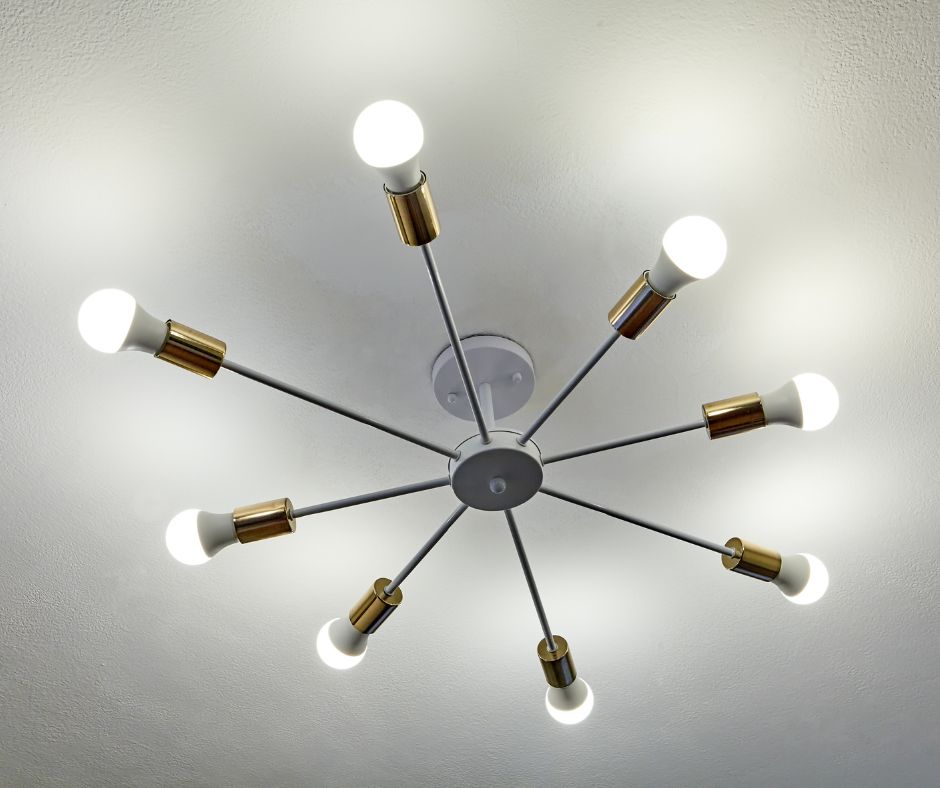
Lighting Fixtures and Accessories
When it comes to interior lighting design, choosing the right lighting fixtures and accessories is crucial. Not only do they serve as functional elements, but they also contribute to the overall aesthetic appeal of your home. In this section, we will explore the different factors to consider when selecting fixtures, as well as energy-efficient and smart lighting solutions that can elevate your space to new heights.
Choosing the Right Fixtures
Selecting the appropriate lighting fixtures is essential in achieving the desired ambiance in each room of your home. Whether you are aiming for a warm and inviting atmosphere in your living room or a bright and focused workspace in your study, the right fixtures can make all the difference.
Wall sconces, chandeliers, pendant lights, and ceiling-mounted fixtures are just a few examples of the vast array of options available. Each type of fixture has its own unique qualities and can be used to enhance different areas of your home. For instance, pendant lights can be an excellent choice for illuminating kitchen islands or dining tables, while wall sconces can create a soft and soothing glow in your bedroom.
When selecting fixtures, keep in mind the size of the room, the height of the ceiling, and the overall design theme you are trying to achieve. It is also important to consider the type and intensity of light emitted by the fixture, as this can greatly impact the mood and functionality of the space.
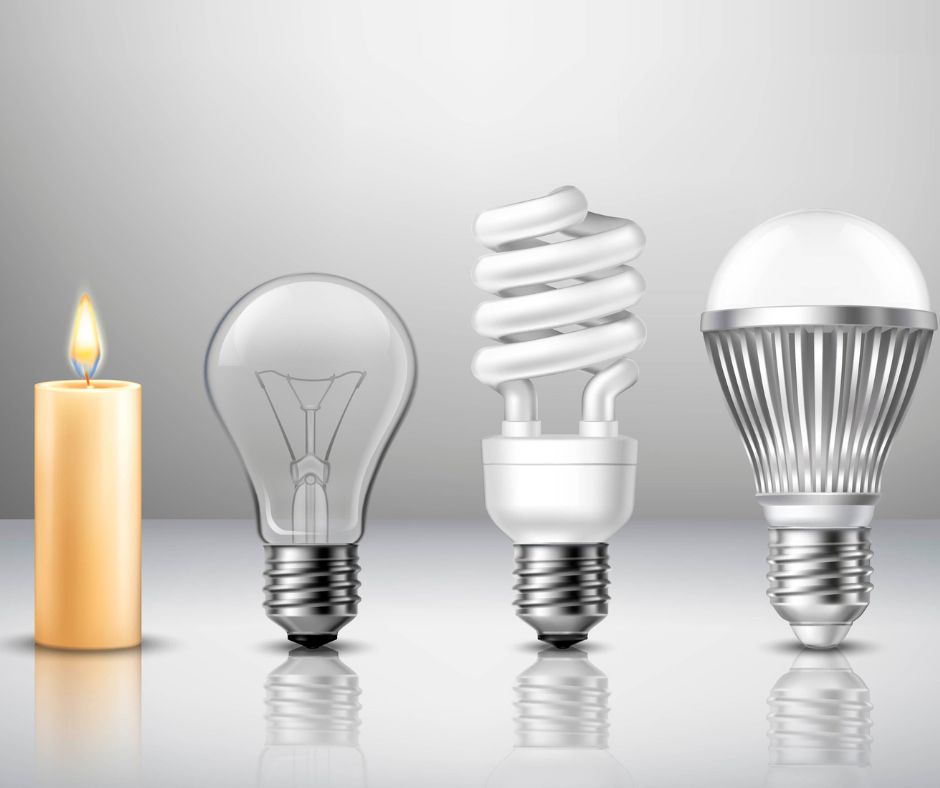
Energy-Efficient Lighting Options
In today’s world, where environmental consciousness is becoming increasingly important, energy-efficient lighting options are gaining popularity. These options not only help reduce energy consumption and lower utility bills but also contribute to a greener and more sustainable future.
LED lighting solutions have revolutionized the way we illuminate our homes. LED lights are highly energy-efficient and have a longer lifespan compared to traditional incandescent bulbs. They consume significantly less energy while providing ample brightness, making them an ideal choice for both ambient and task lighting.
Another energy-saving option is the use of compact fluorescent lamps (CFLs), which offer a more energy-efficient alternative to incandescent bulbs. CFLs emit a warm, soft light and are available in various shapes and sizes to suit different fixtures.
Smart Lighting Solutions
In the era of smart homes, it’s no surprise that smart lighting solutions have become increasingly popular. With the help of technology, you can now control and customize your home lighting with ease.
Smart bulbs and smart switches allow you to adjust the brightness and color of your lights using your smartphone or voice commands. You can create different lighting scenes for various occasions, such as movie nights or romantic dinners, all at the touch of a button.
Furthermore, smart lighting systems can be integrated with other smart devices in your home, such as motion sensors and voice assistants, to create a seamless and automated lighting experience. Imagine walking into a room, and the lights automatically turn on, or setting a schedule for your lights to simulate occupancy when you’re away on vacation for added security.
By incorporating smart lighting solutions into your interior lighting design, you not only enhance the functionality and convenience of your home but also add a touch of modernity and sophistication.
In the next section, we will explore the benefits of working with an expert lighting designer and provide valuable tips on finding the right professional for your project. But before we move on, let’s take a moment to reflect on the importance of lighting in creating the perfect ambiance in your home.
Hiring a Professional Lighting Designer
When it comes to enhancing your home with the perfect interior lighting design, it’s essential to consider the benefits of working with an expert. While you may have a good eye for aesthetics and a basic understanding of lighting concepts, a professional lighting designer can bring your vision to life with their extensive knowledge and experience. Let’s explore the advantages of hiring an expert in the field and how to find the right lighting designer for your project.
Benefits of working with an expert
Collaborating with a professional lighting designer offers a multitude of benefits that go beyond mere illumination. These experts possess a deep understanding of the art and science of lighting, enabling them to create a truly exceptional atmosphere in your home. Here are a few advantages of working with a professional lighting designer:
- Expertise and Creativity: A professional lighting designer has a keen eye for detail and a thorough understanding of lighting techniques. They can transform your home into a captivating space, utilizing different lighting fixtures to create the desired mood and ambiance.
- Tailored Solutions: Every home is unique, and a professional lighting designer can tailor their approach to suit your specific needs and preferences. Whether you desire a warm and cozy atmosphere or a vibrant and modern look, they can design a lighting scheme that perfectly complements your style.
- Energy Efficiency: With an increasing focus on sustainability, energy-efficient lighting solutions are becoming more popular. A professional lighting designer can guide you towards LED lighting solutions and other eco-friendly options that not only save energy but also reduce your carbon footprint.
- Enhanced Functionality: Lighting is not just about aesthetics; it also plays a crucial role in functionality. A professional lighting designer can strategically plan the placement of task lighting in areas such as the kitchen or home office, ensuring optimal visibility and comfort during specific activities.
Finding the right lighting designer for your project
Now that you understand the benefits of hiring a professional lighting designer, it’s important to know how to find the right one for your project. Here are a few key considerations:
- Experience and Portfolio: Look for a lighting designer with a solid portfolio and a diverse range of projects under their belt. This will give you a sense of their style, expertise, and ability to work with different architectural styles.
- Credentials and Qualifications: Check if the lighting designer holds relevant certifications or qualifications in the field. This demonstrates their commitment to professionalism and staying updated with the latest industry standards.
- Client Reviews and Testimonials: Reading reviews and testimonials from previous clients can provide valuable insights into the lighting designer’s reputation, work ethic, and ability to meet deadlines.
- Communication and Collaboration: Effective communication is crucial when working with a lighting designer. Ensure that their communication style aligns with your expectations and that they are open to collaboration throughout the design process.
By taking these factors into account, you can find a professional lighting designer who not only understands your vision but also has the expertise to bring it to life.
In conclusion, hiring a professional lighting designer can elevate your home’s interior lighting design to new heights. With their expertise, creativity, and tailored solutions, they can transform your space into a captivating and functional environment. Remember to consider their experience, credentials, and communication skills when selecting the right designer for your project. So why wait? Take the first step towards illuminating your home with brilliance and consult a professional lighting designer today.
For more information on lighting solutions, you can visit our blog posts on garden lighting ideas and outdoor lighting solutions.
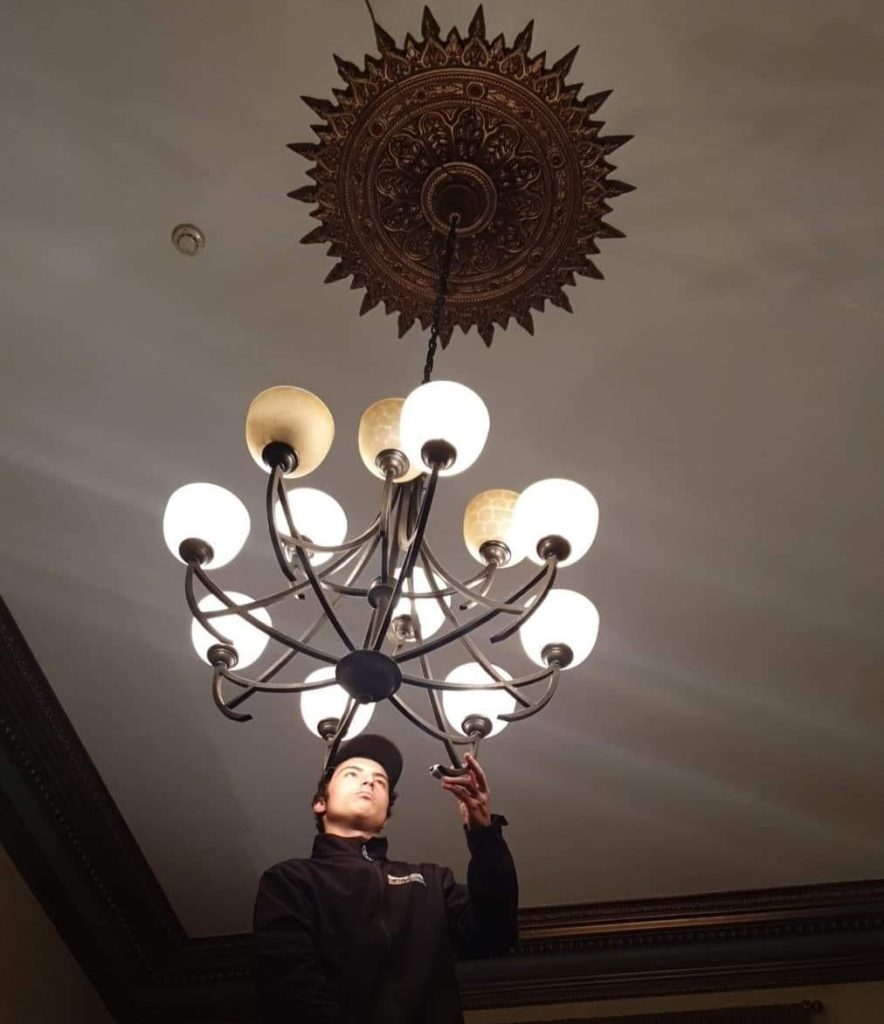
The Final Words
The importance of lighting in home design cannot be overstated. It not only illuminates the space but also sets the mood and creates a welcoming ambiance. Whether you are looking to create a cozy reading nook, highlight a piece of artwork, or simply brighten up a room, the right lighting can make all the difference.
Achieving a balance between natural and artificial lighting is also key. Natural light brings warmth and a sense of connection to the outdoors, while artificial light provides functionality and control. By incorporating windows, skylights, or light tubes, you can maximize the use of natural light during the day. In the evening, a combination of ambient and task lighting can provide the necessary illumination for various activities.
For those who want to take their lighting design to the next level, smart lighting solutions offer convenience and control at your fingertips. With just a few taps on your smartphone or voice commands, you can adjust the lighting in any room, create custom lighting scenes, and even schedule lighting changes to suit your lifestyle.
By understanding the different types of lighting, designing with intention, choosing the right fixtures and accessories, and considering the benefits of working with a professional, you can create a space that is both visually stunning and practical.
So, don’t underestimate the power of lighting and let it transform your home into a sanctuary of light and beauty.
Do you need an electrician to help install the lighting you have carefully selected?
Get in touch with the team at Spanos ElectriCool
